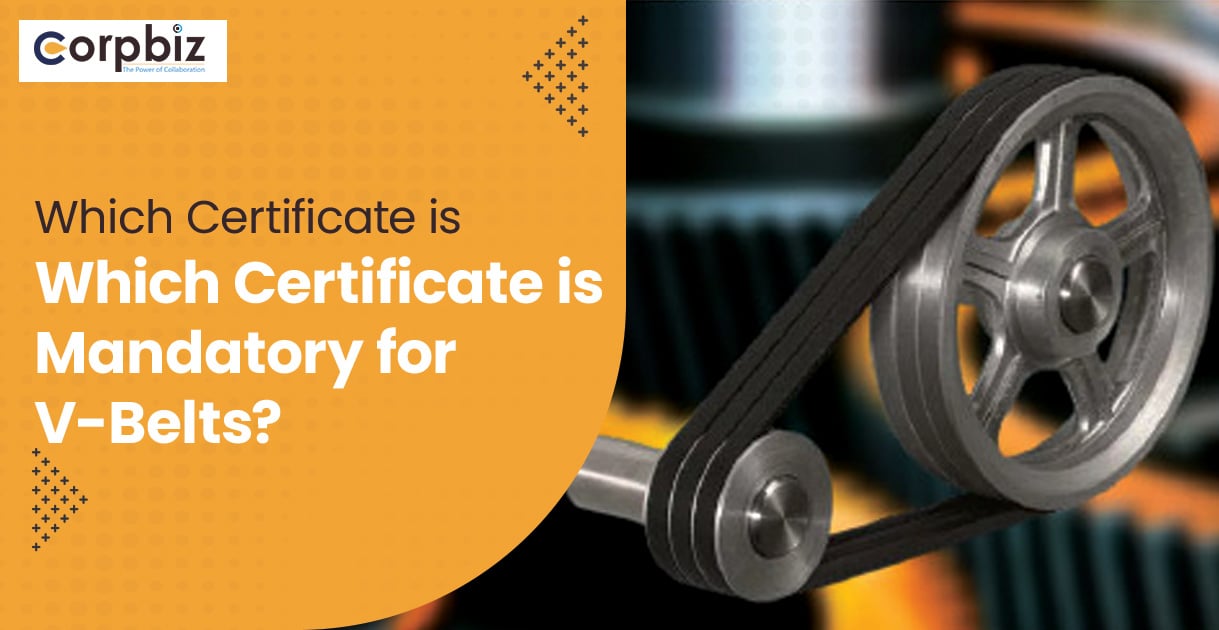India has a solid industrial foundation and a century-plus ceramic industry produced in significant and small sectors with various sizes, types, standards, and quality levels. The concentration of small-scale ceramic industries is highest in Gujarat. The technical ceramics sector has grown significantly over the past 20 years.
In recent years, India has become a significant player in the global ceramic honeycomb export market. Demand for this creative and adaptable product has surged across several industries, resulting in a burgeoning Indian export industry. This blog will discuss the causes of this expansion, the uses of ceramic honeycombs, and India’s contribution to the world’s demand.
Let’s read it out:
Ceramic Honeycomb Industry in India
Porous, structured ceramic materials such as cordierite, silicon carbide, or aluminium oxide create ceramic honeycombs. Their distinctive honeycomb-like structure, which has many tiny channels and cells, makes them stand out. Because of these qualities, ceramic honeycombs are very useful in heat exchangers, diesel particle filters, and catalytic converters.
Over the years, India’s ceramic honeycomb manufacturing sector has experienced significant expansion. Numerous Indian businesses produce a wide variety of ceramic honeycomb goods for both domestic and foreign markets. These items are used in numerous industries, including automotive, petrochemical, and manufacturing.
Benefits of Certification for Ceramic Honeycomb Exporters
The significant benefits of certification for ceramic honeycomb exporters are mentioned below-
- Market Access and Credibility: Exporters of ceramic honeycomb use MoEF certification as a passport to enter foreign markets. Many nations and consumers prioritise products with accepted environmental certificates, and this certification offers the legitimacy required to enter these markets.
- Regulatory Compliance: Exporters of ceramic honeycomb are guaranteed to adhere to domestic and international environmental standards by their MoEF accreditation. As a result, legal challenges are less likely. Additionally, it strengthens exporters’ dedication to ethical commercial conduct.
Getting environmental clearance is something an entrepreneur involved in ceramic honeycomb export business can’t ignore. To strengthen your business operations globally, you must go for IEC registration.
- Customer Confidence: In this era of growing environmental consciousness, customers feel more confident about brands that have earned MoEF accreditation. Clients can feel secure knowing their ceramic honeycombs are of the highest calibre. Additionally, they have to think that products are produced with a commitment to environmental responsibility.
- Competitive Advantage: Having MoEF certification helps ceramic honeycomb exporters stand out from rivals in a crowded international market. It becomes a differentiator that can sway consumers’ decisions to buy in their favour.
Understanding Ceramic Honeycombs
The name “honeycomb” comes from the hexagonal cell layout that gives ceramic honeycombs their resemblance to a beehive. The sophisticated ceramics used to make these honeycombs, including cordierite, mullite, or alumina, provide them with remarkable mechanical and thermal qualities.
The distinctive design makes high surface area, minimal pressure drop, and superior heat transfer characteristics possible.
Applications in a Variety of Industries
Ceramic honeycombs’ adaptability has made them widely used in various industries, increasing demand for them. Among the crucial applications are:
- Catalytic Converters: The automotive industry uses ceramic honeycombs as catalytic converter substrates, essential in mitigating harmful vehicle emissions.
- Industrial Emissions Control: Ceramic honeycombs are used in emission control systems in industrial settings to help reduce pollutants and ensure environmental laws are followed.
- Heat Recovery Systems: Ceramic honeycombs have a high thermal efficiency, which makes them perfect for heat recovery applications in manufacturing and power generation industries.
- Filtration Systems: Ceramic honeycombs are efficient mediums for separating particles and contaminants in gas and liquid filtration systems.
- Aerospace: Because ceramic honeycombs are lightweight and robust, the aircraft industry uses them for structural components and thermal insulation.
Critical Criteria for Certification
- Environmental Impact Assessment or EIA: One requirement of MoEF accreditation is a thorough Environmental Impact Assessment. This assessment assesses the possible environmental effects of ceramic honeycomb manufacture, including emissions, resource use, and waste production.
Manufacturers who want to be certified by MoEF must commit to reducing their environmental impact.
- Raw Material Sourcing: The certification procedure monitors the source of raw materials used in the production of ceramic honeycomb. Ensuring that these materials are sourced ecologically and ethically is a basic requirement of the MoEF certification for ceramic honeycomb export.
This encourages prudent resource management and inhibits actions like deforestation that could negatively impact the ecosystem.
- Energy Efficiency: The MoEF certification prioritises manufacturing processes’ energy efficiency.
Certified manufacturers must use energy-efficient practices and technologies, which reduce their overall energy use and lower greenhouse gas emissions. This benefits both the manufacturer and the environment.
- Emission Control: The procedures adopted to limit emissions during the production of ceramic honeycombs are evaluated and certified by MoEF for export.
Monitoring and lowering emissions into the air and water are part of this. Otherwise, the environment can suffer as a result. To become and remain MoEF certified, you must use cutting-edge emission control technologies.
- Waste Management: Effective waste management is essential to earning MoEF accreditation. Manufacturers of certified ceramic honeycomb are required to implement comprehensive waste reduction and recycling programmes.
This involves properly disposing of hazardous waste and developing plans to reduce the amount of non-recyclable garbage produced.
Factors Driving the Boom in Ceramic Honeycomb Exports from India
India has achieved great success in exporting ceramic honeycombs due to several factors:
- High-quality manufacturing: To guarantee that their ceramic honeycombs satisfy international standards, Indian manufacturers have made significant investments in cutting-edge technology and strict quality control procedures.
- Cost Competitiveness: India is a better option for foreign purchasers looking for affordability because it provides cost-effective manufacturing options without sacrificing quality.
- Skilled Workforce: The nation’s highly skilled labour force is essential to producing superior ceramic honeycombs since it ensures design and production procedures accuracy.
- Government Support: The Indian government has created a favourable climate for firms in this sector by promoting production and exports through programmes and incentives.
- Strategic Global Alliances: Indian manufacturers have strategically partnered with foreign companies to broaden their market reach and build a powerful worldwide presence.
Market Trends and Demand Dynamics
Globally, the market for ceramic honeycombs has consistently increased due to the growing focus on environmental sustainability and strict emission regulations. The need for dependable and efficient solutions, like ceramic honeycombs, is only increasing as businesses worldwide work to comply with these standards.
- Automotive Sector: Since internal combustion engines coexist with cleaner alternatives during the transition period, there is a continued need for ceramic honeycombs in catalytic converters as the automobile industry moves towards electric vehicles.
- Renewable Energy: The need for ceramic honeycombs in heat recovery systems for solar and geothermal power generation has increased due to the increased attention paid to renewable energy sources.
- Environmental Regulations: Strict rules governing the quality of the air and water have compelled businesses to invest in cutting-edge emission control technology, which has increased demand for ceramic honeycombs.
- Research and Development: Ongoing research and development in materials science and production techniques are improving the performance and efficiency of ceramic honeycombs and creating new application opportunities.
Exporting Ceramic Honeycombs from India
Several phases are involved in exporting ceramic honeycombs from India, from production to transportation. Indian manufacturers must comply with particular norms and standards to ensure their products’ safety and quality. The following are some essential actions in the export of ceramic honeycombs from India:
- Production and Quality Control: Ceramic honeycombs are manufactured according to global quality standards. Procedures for quality control ensure that the goods fulfil the necessary requirements.
- Packaging: The items are wrapped with care to avoid damage during transit. Materials used for packaging must be reliable and safe.
- Documentation: Exporters must prepare invoices, bills of lading, certificates of origin, and any other necessary customs documentation.
- Customs Clearance: Besides paying the relevant tariffs and taxes, the products must go through customs clearance.
- Logistics and Shipping: Exporters pick a logistics firm and the means of transportation (land, sea or air) for the ceramic honeycombs to be delivered to their destination.
- Compliance with Regulations: Following the rules established by the Directorate General of Foreign Trade (DGFT) and the Ministry of Environment, Forests, and Climate Change (MoEF) is essential to a successful export.
Possibilities and Challenges
Although the export of ceramic honeycomb from India is booming, certain obstacles must be overcome for the business to continue expanding. These difficulties include the unpredictability of the world economy, price swings for raw materials, and rivalry from other manufacturing centres.
To overcome market barriers, these problems also offer chances for innovation, diversity, and calculated partnerships.
Conclusion
In summary, India’s burgeoning ceramic honeycomb export industry is a testament to its manufacturing capability, technological advancements, and ability to adjust to shifting global market trends.
India’s commitment to cost and quality competitiveness and the many industries in which ceramic honeycombs are used establish the country as a significant player in the worldwide market.
The growing emphasis on environmental responsibility and sustainability on a global scale is expected to drive up demand for ceramic honeycombs, which in turn would accelerate India’s growth in this profitable export market.
Frequently Asked Questions
What is a ceramic honeycomb?
A ceramic honeycomb is a structure composed of ceramic elements with a honeycomb-like pattern. It is frequently used in industrial filtering, vehicle exhaust systems, and air purification catalysts.
Why is India a key exporter of ceramic honeycomb?
India is a significant exporter of ceramic honeycomb because of its robust manufacturing capacities, accessible raw materials, affordable labour, and increasing emphasis on quality standards.
What is the future outlook for ceramic honeycomb export industry?
The rising focus on clean technology and environmental restrictions will likely drive-up demand for ceramic honeycombs globally. With its well-established industrial base, highly skilled workforce, and emphasis on sustainability and quality, India is ideally positioned to take advantage of this demand.
What quality standards are essential for exporting ceramic honeycomb?
ISO certification, compliance with environmental laws, material qualities, and performance that satisfy industry standards like ASTM and DIN are examples of significant quality requirements.
What are the major markets for Indian ceramic honeycomb exports?
The need for industrial and automotive pollution control systems is considerable in major markets like the US, Europe, China, Japan, and other developed nations.
What challenges do Indian exporters face in the ceramic honeycomb market?
Obstacles include varying raw materials costs, strict global quality regulations, rivalry from foreign nations, and administrative concerns, including transportation and customs clearance.
How can ceramic honeycomb manufacturers stay competitive in the global market?
Manufacturers may maintain their competitiveness by concentrating on cost-effectiveness, embracing cutting-edge manufacturing technologies, investing in R&D, consistently enhancing the quality of their products, and forging strategic alliances to increase their worldwide footprint.
What are the benefits of exporting ceramic honeycomb from India?
Gaining access to international markets, generating more income, promoting economic expansion, and capitalising on India’s cost and manufacturing advantages are just a few positives.
What support is available for new exporters in the ceramic honeycomb industry?
Governmental organisations dedicated to promoting exports, trade associations, industry associations, and financial institutions providing export financing and insurance services can all assist.
Read our article: What Is The IEC Registration Process In India?











